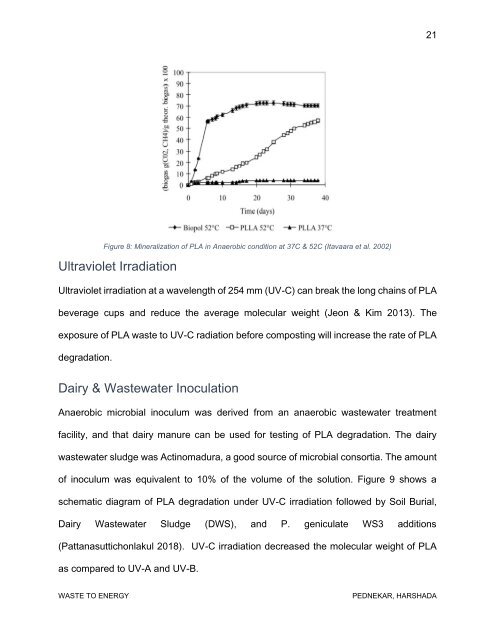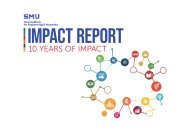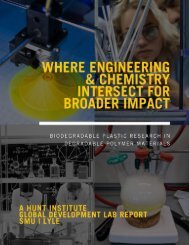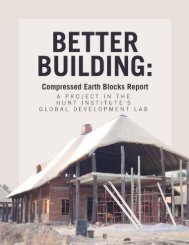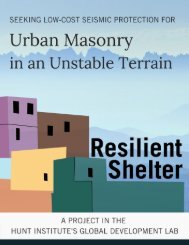Waste to Energy: Harnessing the fuel in organic waste to create a business opportunity for a recycling-based society and system
To generate a feasible amount of methane to support a digester, it is estimated that 10 to 12 tons/d, with 8-10% contamination and 80% of the contamination being bioplastics, can produce about 70 Nm3/h of biogas. This is the amount of biogas needed to produce 200 kg/day of hydrogen, which is the smallest commercially available packaged system. The greenhouse gas emission (GHG) for IngeoTM is currently 1.3 kg CO2 eq./kg polymer compared to approx. 3.2 kg CO2 eq./kg polymer for PET. Therefore, implementing anaerobic digestion for PLA can reduce around 942.5 kg - 1132 kg per day of CO2 equivalent emissions. A total of 1 ton per day of undigested bioplastic with 30% of total solids will be sent to landfills; 3 tons per day of dewatered digestate cake can be utilized for composting, and Class A fertilizer can be produced. The research on anaerobic degradation of biopolymers is still in its infancy. Therefore, this report has discussed different pre-treatment alternatives to treat PLA such as physical, chemical, and thermal treatments. This report suggests on-site segregation benefits of the current solid waste management scenario in the commercial sector of Plano, Texas. Organic waste generated from a cafeteria of the commercial sector in Plano caused an environmental impact on landfills. This report consists of a description of existing scenarios and possible pre-treatment alternatives for bioplastic degradation generated from the commercial sector. Harshada Pednekar was a graduate research analyst in the Hunt Institute while studying for a masters degree in environmental engineering from SMU's Lyle School of Engineering
To generate a feasible amount of methane to support a digester, it is estimated that 10 to 12 tons/d, with 8-10% contamination and 80% of the contamination being bioplastics, can produce about 70 Nm3/h of biogas. This is the amount of biogas needed to produce 200 kg/day of hydrogen, which is the smallest commercially available packaged system. The greenhouse gas emission (GHG) for IngeoTM is currently 1.3 kg CO2 eq./kg polymer compared to approx. 3.2 kg CO2 eq./kg polymer for PET. Therefore, implementing anaerobic digestion for PLA can reduce around 942.5 kg - 1132 kg per day of CO2 equivalent emissions.
A total of 1 ton per day of undigested bioplastic with 30% of total solids will be sent to landfills; 3 tons per day of dewatered digestate cake can be utilized for composting, and Class A fertilizer can be produced. The research on anaerobic degradation of biopolymers is still in its infancy. Therefore, this report has discussed different pre-treatment alternatives to treat PLA such as physical, chemical, and thermal treatments. This report suggests on-site segregation benefits of the current solid waste management scenario in the commercial sector of Plano, Texas. Organic waste generated from a cafeteria of the commercial sector in Plano caused an environmental impact on landfills. This report consists of a description of existing scenarios and possible pre-treatment alternatives for bioplastic degradation generated from the commercial sector.
Harshada Pednekar was a graduate research analyst in the Hunt Institute while studying for a masters degree in environmental engineering from SMU's Lyle School of Engineering
You also want an ePaper? Increase the reach of your titles
YUMPU automatically turns print PDFs into web optimized ePapers that Google loves.
21<br />
Figure 8: M<strong>in</strong>eralization of PLA <strong>in</strong> Anaerobic condition at 37C & 52C (Itavaara et al. 2002)<br />
Ultraviolet Irradiation<br />
Ultraviolet irradiation at a wavelength of 254 mm (UV-C) can break <strong>the</strong> long cha<strong>in</strong>s of PLA<br />
beverage cups <strong>and</strong> reduce <strong>the</strong> average molecular weight (Jeon & Kim 2013). The<br />
exposure of PLA <strong>waste</strong> <strong>to</strong> UV-C radiation be<strong>for</strong>e compost<strong>in</strong>g will <strong>in</strong>crease <strong>the</strong> rate of PLA<br />
degradation.<br />
Dairy & <strong>Waste</strong>water Inoculation<br />
Anaerobic microbial <strong>in</strong>oculum was derived from an anaerobic <strong>waste</strong>water treatment<br />
facility, <strong>and</strong> that dairy manure can be used <strong>for</strong> test<strong>in</strong>g of PLA degradation. The dairy<br />
<strong>waste</strong>water sludge was Act<strong>in</strong>omadura, a good source of microbial consortia. The amount<br />
of <strong>in</strong>oculum was equivalent <strong>to</strong> 10% of <strong>the</strong> volume of <strong>the</strong> solution. Figure 9 shows a<br />
schematic diagram of PLA degradation under UV-C irradiation followed by Soil Burial,<br />
Dairy <strong>Waste</strong>water Sludge (DWS), <strong>and</strong> P. geniculate WS3 additions<br />
(Pattanasuttichonlakul 2018). UV-C irradiation decreased <strong>the</strong> molecular weight of PLA<br />
as compared <strong>to</strong> UV-A <strong>and</strong> UV-B.<br />
WASTE TO ENERGY<br />
PEDNEKAR, HARSHADA


